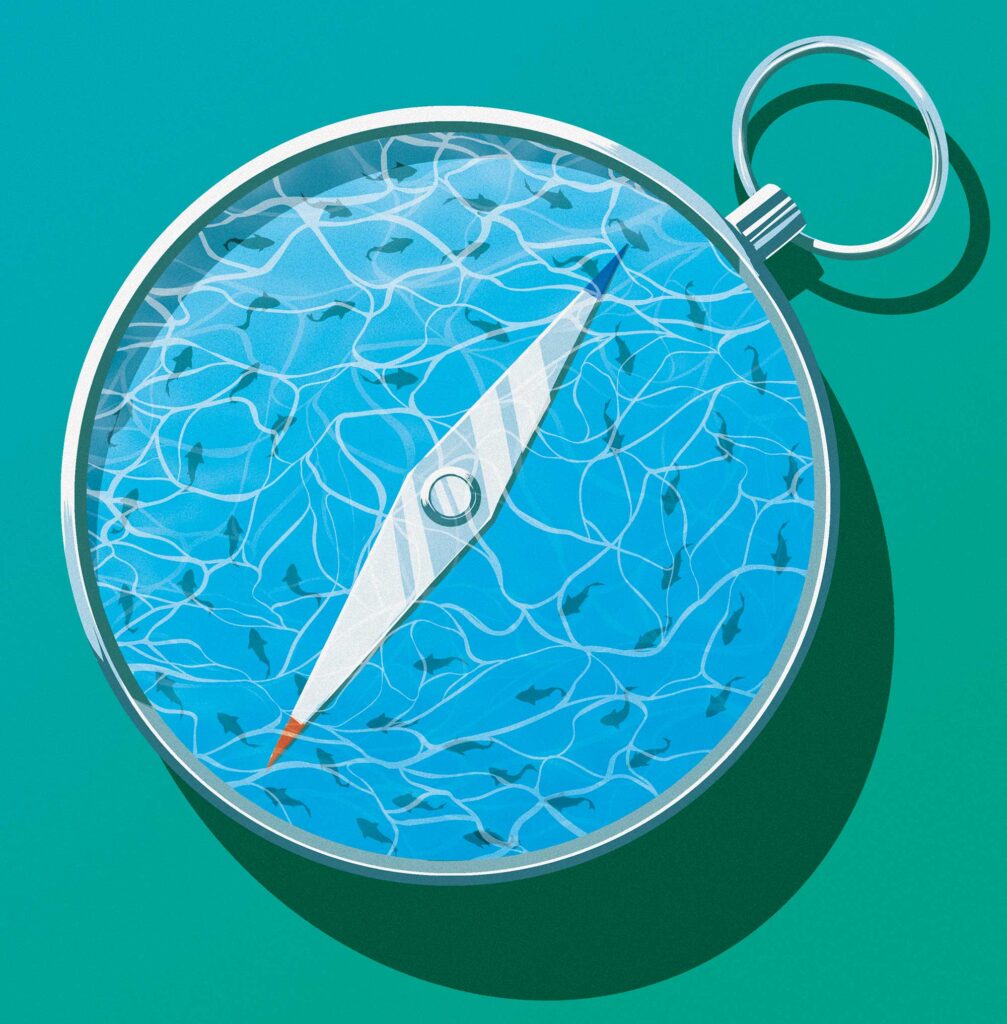Can Fish Thrive Without a Home?
 It’s important to consider what essential functions structure provides for fish
Keith Alexander Lee
It’s important to consider what essential functions structure provides for fish
Keith Alexander Lee
As anglers, we often look for structure when we’re trying to find fish. Back in my formative years, and before fish finders and sounders, I used to spend time snorkeling the shorelines of lakes to locate deeper, rocky shoals and then go back to target these areas for smallmouth bass.
Later in life, I was fortunate enough to frequent Florida waters and scout dock pilings and tidal channels lined with mangroves for snook and redfish. Heck, even when living in the Bahamas and heading offshore to fish, it was a game of spotting weed lines and flotsam if we wanted mahi for dinner that night. Essentially, structure and fishing for most species we chase go hand in hand.
Structure is an essential part of habitat for most fish, and it’s an oversight to think of habitat as something basic. When I try to inspire the 150-plus students in my undergraduate conservation class each fall, they quickly learn how the relationship between fish and habitat can be very complex. The needs of fish change throughout their lives, plus essential habitat for one species can be completely different for another. Layered into this are the physical and chemical properties of the water, such as water temperature and density, as well as water quality.
Wrapping our heads around the three-dimensional aquatic space that fish live in can be foreign to us land animals. This is why I write “structure and function” on the whiteboard in front of the class.
I frequently refer to the connections of habitat and the important functions that structures serve for the various stages of a fish’s life. At a basic level, fish need to survive each day after they are born, feed and optimize their growth, live long enough to reach sexual maturity, and then find mates and spawn to pass their genes on to the next generation. Ah, the circle of life.
With that, it makes sense for anglers and fish nerds alike to train our eyes and brains to reflect on what essential functions structure provides for fish. For instance, red mangrove prop roots provide a wonderful maze for juvenile gray (mangrove) snapper to avoid bigger predators while capitalizing on other critters living in these habitats as a healthy meal. Their needs will change as juvenile gray snapper grow and eventually move to patch reefs, where they walk a fine line between prey and predator. Remember that swimming, movement and migration take energy, further amplifying the need to connect the life of a fish with the habitats and structures it uses, and how those can change throughout its life.
This is fundamental fish ecology, and it really helps us as anglers to think more about where fish will be and why. Even as a cobia hovers in a current eddy behind a leg of an oil rig in the northern Gulf of Mexico, it’s doing so to conserve a bit of energy while waiting for a baitfish meal. It’s also why we might toss a nice bucktail jig in that direction.
All of this is important because it makes a direct connection between the fish we love to chase and being informed advocates for the protection of their habitats. If you can believe it or not, traditional fisheries management ignores this connection. Yup, really. Traditional fisheries management focuses on the demographics (age and size structure) of a single fish population, and how many fish can be harvested so as not to impact the future of that population. Fisheries management still largely focuses on one target species at a time, and not the essential habitats (including structures), food sources or prey of that species. Current management largely ignores the interconnectedness between the fish and their home waters, habitats and structures.
Read Next: Understanding Fish Migrations
More recently, there has been a push to move away from single-species management and management that focuses solely on the fish themselves. For instance, ecosystem-based fisheries management can still have a specific species of focus, including species we like to chase as anglers, but it encourages an examination of the quantity and quality of the habitat. Habitat management might include nontarget species that serve as important prey or provide essential ecosystem-level services that traditional fisheries management ignores.
Yes, inserting habitat into fisheries management can be complex and complicated, but isn’t it naive to disconnect fish from their homes and the vital functions they provide? What about in these times of rapid environmental changes and the need to find ways to build more resilience into recreational fisheries? From my perspective, we need a faster paradigm shift when it comes to conserving the fish we target and the habitats they depend on. We put people on the moon and even have our eyes set on Mars, but we still struggle to ingrain a more holistic approach in the way we protect fish populations, their habitats and broader ecosystems.
The post Can Fish Thrive Without a Home? appeared first on Salt Water Sportsman.
- Home
- About Us
- Write For Us / Submit Content
- Advertising And Affiliates
- Feeds And Syndication
- Contact Us
- Login
- Privacy
All Rights Reserved. Copyright , Central Coast Communications, Inc.